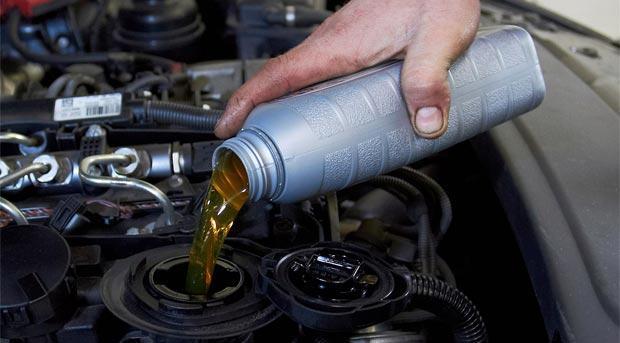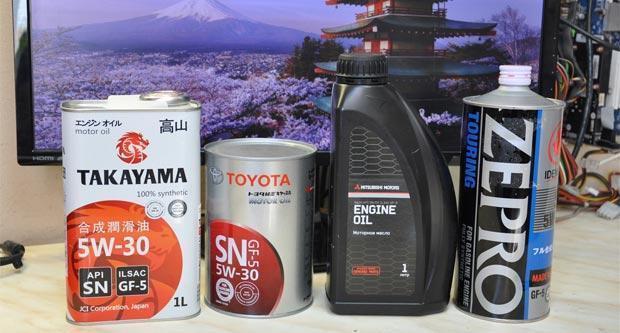
Classification of motor oils according to ILSAC
ILSAC classification: general provisions
In the second half of the XNUMXth century, the United States and Japan developed in close cooperation in almost all areas of activity. Therefore, many standards, specifications and other regulatory documents in various industries in these countries have something in common or are completely identical. This phenomenon has not bypassed the segment of motor oils for cars.
In general, there are 4 generally recognized markings for motor oils in the world: SAE, API, ACEA and ILSAC. And the last, the Japanese ILSAC classification, is the youngest. We note right away that the division of lubricants into categories according to the Japanese standardization system covers only gasoline internal combustion engines of passenger cars. The ILSAC approval does not apply to diesel engines.


The first ILSAC GF-1 standard appeared back in 1992. It was created on the basis of the American API SH standard in cooperation between the Japanese and American associations of automobile manufacturers. The requirements for motor oils specified in this document, in technical terms, completely duplicated API SH. Further, in 1996, a new ILSAC GF-2 standard was released. It, like the previous document, was a copy of the American SJ API class, rewritten in the Japanese manner.
Today, these two classes are considered obsolete and are not used to label newly produced motor oils. However, if a car requires GF-1 or GF-2 category lubricants for its engine, they can be replaced without fear with fresher oils of this standard.


ILSAC GF-3
In 2001, Japanese automotive engine oil manufacturers were forced to adapt to a new standard: ILSAC GF-3. In technical terms, it is copied from the American API SL class. However, for the Japanese domestic market, the new GF-3 class of lubricants had higher emission requirements. In the conditions of overpopulated islands, this requirement seems quite logical.
Also, ILSAC GF-3 engine oils were supposed to provide more significant fuel economy and increased protection of the engine from damage under extreme loads. Already at that time, in the community of Japanese automakers, there was a tendency to reduce the viscosity of motor oils. And this required from low-viscosity lubricants increased protective properties at operating temperatures.
Currently, this standard is practically not used in the production of motor oils, and canisters with fresh lubricants have not been marked with it in the domestic market of Japan for several years. However, outside of this country, you can still find cans of oils of the ILSAC GF-3 class.


ILSAC GF-4
This standard was officially issued as a guide for automotive oil manufacturers in 2004. In turn, copied from the standard of the American Petroleum Institute API SM. In the domestic market of Japan, it is gradually leaving the shelves, giving way to a fresher class.
The ILSAC GF-4 standard, in addition to raising the requirements for environmental friendliness of exhaust gas emissions and fuel efficiency, also regulates viscosity limits. All GF-4 oils are low viscosity. The viscosity of ILSAC GF-4 greases ranges from 0W-20 to 10W-30. That is, there are simply no original ILSAC GF-4 oils on the market with a viscosity, for example, 15W-40.
The ILSAC GF-4 classification is quite widespread in Japanese car importing countries. Many manufacturers of lubricants that produce engine oils for internal combustion engines of Japanese cars produce GF-4 standard products in a wide range of viscosities.


ILSAC GF-5
To date, the ILSAC GF-5 standard is the most progressive and widespread. Repeats the current class approved by the American Petroleum Institute for API SM gasoline ICEs. Released GF-5 as a guideline for automotive oil manufacturers in 2010.
In addition to increasing requirements for energy saving and environmental performance, ILSAC GF-5 oils must protect the engine as reliably as possible when running on bioethanol. This fuel is known to be "moody" compared to regular petroleum-derived gasolines and requires increased protection for the engine. However, environmental standards and Japan's desire to minimize emissions have put car manufacturers in a tight box. ILSAC GF-5 also provides for the production of lubricants with an unprecedented viscosity at the time of approval of the document: 0W-16.


Currently, Japanese and American road transport and oil engineers are developing the ILSAC GF-6 standard. The first forecast for the release of the updated classification of motor oils according to ILSAC was scheduled for January 2018. However, at the beginning of 2019, the new standard did not appear.
Nevertheless, on English-language resources, well-known manufacturers of motor oils and additives have already announced the appearance of a new generation of motor oils with the ILSAC GF-6 standard. There was even information that the new ILSAC classification will divide the GF-6 standard into two subclasses: GF-6 and GF-6B. What exactly will be the difference between these subclasses is still not known for certain.


Watch this video on YouTube

